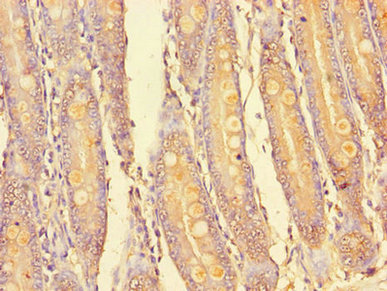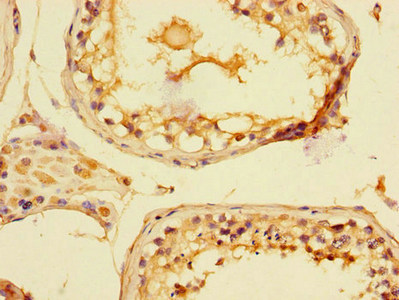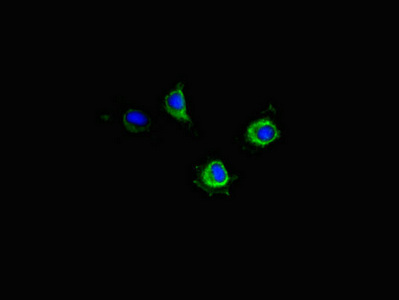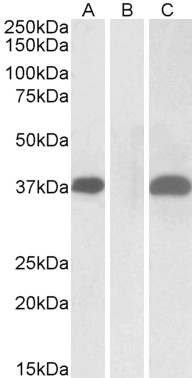
Immunohistochemistry of paraffin-embedded human small intestine tissue using CSB-PA873725LA01HU at dilution of 1:100
PIM2 Antibody
CSB-PA873725LA01HU
ApplicationsImmunoFluorescence, ELISA, ImmunoHistoChemistry
Product group Antibodies
ReactivityHuman
TargetPIM2
Overview
- SupplierCusabio
- Product NamePIM2 Antibody
- Delivery Days Customer20
- ApplicationsImmunoFluorescence, ELISA, ImmunoHistoChemistry
- CertificationResearch Use Only
- ClonalityPolyclonal
- ConjugateUnconjugated
- Gene ID11040
- Target namePIM2
- Target descriptionPim-2 proto-oncogene, serine/threonine kinase
- Target synonymsserine/threonine-protein kinase pim-2, pim-2 oncogene, pim-2h, proto-oncogene Pim-2 (serine threonine kinase)
- HostRabbit
- IsotypeIgG
- Protein IDQ9P1W9
- Protein NameSerine/threonine-protein kinase pim-2
- Scientific DescriptionProto-oncogene with serine/threonine kinase activity involved in cell survival and cell proliferation. Exerts its oncogenic activity through: the regulation of MYC transcriptional activity, the regulation of cell cycle progression, the regulation of cap-dependent protein translation and through survival signaling by phosphorylation of a pro-apoptotic protein, BAD. Phosphorylation of MYC leads to an increase of MYC protein stability and thereby an increase transcriptional activity. The stabilization of MYC exerted by PIM2 might explain partly the strong synergism between these 2 oncogenes in tumorigenesis. Regulates cap-dependent protein translation in a mammalian target of rapamycin complex 1 (mTORC1)-independent manner and in parallel to the PI3K-Akt pathway. Mediates survival signaling through phosphorylation of BAD, which induces release of the anti-apoptotic protein Bcl-X(L)/BCL2L1. Promotes cell survival in response to a variety of proliferative signals via positive regulation of the I-kappa-B kinase/NF-kappa-B cascade; this process requires phosphorylation of MAP3K8/COT. Promotes growth factor-independent proliferation by phosphorylation of cell cycle factors such as CDKN1A and CDKN1B. Involved in the positive regulation of chondrocyte survival and autophagy in the epiphyseal growth plate.
- ReactivityHuman
- Storage Instruction-20°C or -80°C
- UNSPSC41116161







